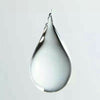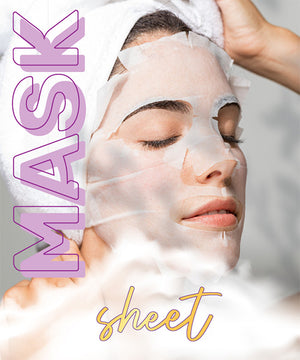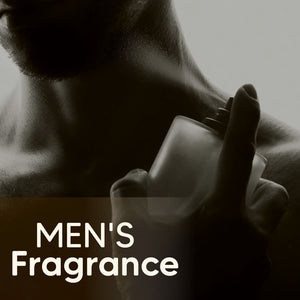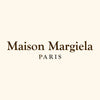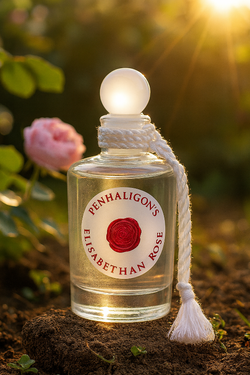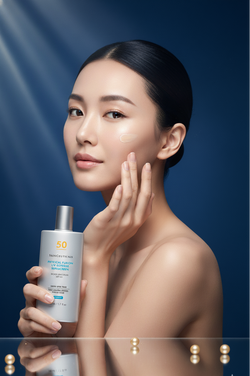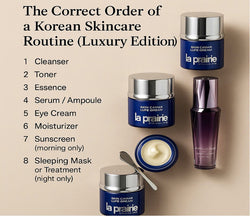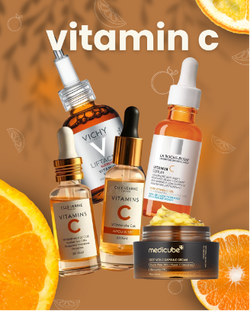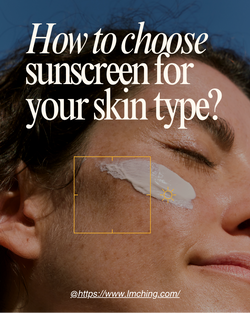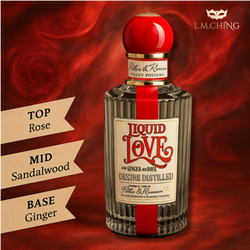Discover the Best Luxury Sunscreens 2025: Long-Lasting, No White Cast, and Superior Protection for Every Skin Type
As we step into 2025, the best luxury sunscreens have become more than just sun protection; they are sophisticated skincare formulations that offer a luxurious experience while safeguarding against harmful UV rays. These products combine high-end technology with thoughtful ingredient lists, focusing not only on sun protection but also on skin health. Advanced formulations are now designed to blend seamlessly with different skin types, lifestyles, and environmental exposures, offering long-lasting, elegant finishes and protection against harmful environmental stressors. In this guide, we break down key ingredients, their mechanisms, and how they work to protect the skin at a deeper level.
Table of Contents
- 1. Deeper Dive into Sunscreen Filters: Chemical, Mineral, and Hybrid
- 2. Insights from Dermatology: How Sunscreens Protect Your Skin Beyond UV
- 3. Expert Insight: Adapting Sunscreen to Your Environment and Skin
- 4. Why You Should Apply Sunscreen Even Indoors
- 5. Sunscreen Comparison Chart 2025
- 6. FAQ
- 6.1. Do I need sunscreen indoors?
- 6.2. What’s the difference between chemical, mineral, and hybrid sunscreens?
- 6.3. How do I choose the right one for me?
- 7. Conclusion: Investing in Luxury Sunscreen for Long-Term Skin Health
- 8. 💡 Top Picks
1. Deeper Dive into Sunscreen Filters: Chemical, Mineral, and Hybrid

Choosing the right sunscreen isn’t just about picking a type – it’s about understanding how each formula works with your skin, climate, and daily exposure.
- Chemical Sunscreens: These sunscreens absorb UV rays through molecular absorption and transform them into heat, preventing skin damage. Their lightweight texture is perfect for makeup users, as it leaves no residue. However, the penetrating nature of chemical sunscreens means they may cause irritation for those with sensitive skin or after cosmetic procedures. Advanced chemical sunscreens now incorporate antioxidants like Vitamin E and ferulic acid, which neutralize free radicals caused by UV rays, enhancing skin protection.
-
Mineral Sunscreens: Mineral or physical sunscreens sit on the skin's surface and reflect UV rays. They are highly recommended for sensitive skin, rosacea, and post-treatment skin. Modern mineral formulations use micronized zinc oxide and tinted formulas, which solve the problem of the typical white cast. Zinc oxide also has anti-inflammatory properties, helping to calm and protect sensitive skin. These formulations now incorporate ingredients such as ceramides and hyaluronic acid, which help strengthen the skin's natural barrier and provide hydration.
-
Hybrid Sunscreens: Hybrid sunscreens combine the benefits of both chemical and mineral filters, offering broad-spectrum protection while maintaining a luxurious finish. These formulations typically contain peptides and antioxidants, which help reduce the damage from UV exposure and support the skin’s repair process. For example, hybrid sunscreens can include Niacinamide, which helps with skin texture, and Green Tea Extract for its antioxidant properties that help reduce the effects of pollution.
2. Insights from Dermatology: How Sunscreens Protect Your Skin Beyond UV

Sunscreens are crucial in protecting against more than just UV radiation. Over the past decade, research has shown that UV exposure accelerates the production of free radicals and reactive oxygen species (ROS), which cause oxidative stress and cellular damage. This can lead to premature aging, pigmentation, and even skin cancer. To combat this, some modern sunscreens incorporate DNA repair enzymes like photolyase and superoxide dismutase (SOD). These enzymes actively repair damaged DNA, improving the skin’s resilience against long-term sun damage.
Additionally, environmental stressors such as blue light (HEV light), which is emitted by electronic devices, and pollution have become significant concerns. Blue light penetrates deeper into the skin layers, contributing to oxidative stress and pigmentation, while pollution can disrupt the skin’s barrier, leading to dryness and irritation. Sunscreens with ingredients like Vitamin C, Niacinamide, and antioxidants from green tea and grape seed extract help defend against these stressors, preventing further skin damage.
The study involved two experiments on human skin tissue (Fitzpatrick skin types III and V), exposing them to blue light alone or in combination with cigarette smoke, then measuring ROS production. Results showed that untreated tissue experienced a 10-fold increase in ROS after exposure. However, pre-treatment with the antioxidant formulation (WEL-DS) reduced ROS by approximately 51–54% in type III skin and 50–54% in type V skin compared with untreated controls (P < .001).
The topical antioxidant significantly reduces oxidative stress caused by blue light and cigarette smoke, highlighting its potential to protect the skin from environmental aggressors that accelerate aging.
3. Expert Insight: Adapting Sunscreen to Your Environment and Skin

A 2024 study by the American Academy of Dermatology found that 71% of people switch their sunscreen depending on the season and environment. This highlights how essential it is to adjust sunscreen usage based on the level of sun exposure, pollution, or time spent in front of screens.
For those living in cities or those who spend time near windows, it’s crucial to choose a broad-spectrum sunscreen with added protection against blue light and pollution. These environmental aggressors contribute significantly to oxidative stress, aging, and pigmentation. Sunscreens that feature pollution defense complexes like Polysaccharide-rich extracts or anti-pollution peptides help prevent the penetration of particles that can degrade the skin barrier and cause inflammation.
4. Why You Should Apply Sunscreen Even Indoors

Although window glass blocks some UV rays, it does not filter them completely. UVA rays, responsible for aging and deep skin damage, can penetrate glass, leading to the breakdown of collagen and elastin. HEV light from phones and computers can also penetrate the skin, causing hyperpigmentation and accelerating aging. Therefore, it’s essential to apply sunscreen indoors, especially when working near windows or using electronic devices for extended periods.
Note: What Are UVA Rays?
UVA rays (Ultraviolet A) are a type of ultraviolet radiation from the sun with longer wavelengths (320–400 nm). They penetrate deep into the skin’s dermis, causing premature aging, wrinkles, and loss of elasticity. Unlike UVB rays, which mainly cause sunburn, UVA rays are present all year round and can pass through clouds and even glass, meaning they affect your skin indoors and outdoors alike.
Key facts about UVA rays:
-
Make up about 95% of the UV radiation that reaches the Earth’s surface.
-
Can penetrate windows and car glass.
-
Cause photoaging (aging due to sun exposure) and contribute to skin cancer risk over time.
5. Sunscreen Comparison Chart 2025

Here’s a quick comparison of some of the most effective luxury sunscreens this year:
|
Product |
Filter Type |
Finish |
PA Rating |
Wear Time |
Price |
|
La Mer SPF50 Fluid |
Chemical |
Natural |
PA++++ |
8 hours |
$$$$ |
|
La Prairie UV Veil |
Hybrid |
Satin |
PA+++ |
7 hours |
$$$$ |
|
SkinCeuticals Physical Fusion UV Defense SPF 50 |
Mineral |
Natural |
PA++++ |
6 hours |
$$$$ |
Each of the sunscreens listed above represents a different philosophy in luxury skincare. La Mer SPF 50 Fluid stands out for its silky, natural finish that complements makeup while offering full chemical-filter protection. It’s ideal for those who value texture and long wear, the kind of sunscreen that feels more like skincare than SPF.
La Prairie UV Veil takes a hybrid approach, balancing chemical and mineral filters to deliver both comfort and defense. The satin finish leaves the skin luminous without being greasy, making it an excellent choice for everyday use in urban environments.
SkinCeuticals Physical Fusion UV Defense SPF 50 is an excellent choice for sensitive skin or for those who prefer a purely mineral formula. Powered by 100% mineral filters (Titanium Dioxide and Zinc Oxide), it provides broad-spectrum UVA/UVB protection while delivering a lightweight, natural finish that enhances skin tone and luminosity. Ideal for daily use, this sunscreen is especially suitable for urban environments or when you want sun protection that doubles as a subtle complexion enhancer
Together, these three sunscreens capture the diversity of luxury sun care in 2025: from the ultra-light chemical fluid of La Mer, to the elegant hybrid technology of La Prairie, and finally the gentle, mineral-based protection of SkinCeuticals. Whether your priority is a makeup-friendly finish, urban pollution defense, or soothing protection for sensitive skin, there’s a refined sunscreen tailored to your lifestyle.
6. FAQ
6.1. Do I need sunscreen indoors?
6.2. What’s the difference between chemical, mineral, and hybrid sunscreens?
- Chemical: Lightweight, no white cast, good under makeup.
- Mineral: Gentle, calming, great for sensitive or post-treatment skin.
- Hybrid: A blend of both, offering broad protection with a smooth finish.
6.3. How do I choose the right one for me?
- Makeup wearers: Choose chemical SPFs that double as primers.
- Sensitive skin: Stick to mineral formulas with soothing ingredients.
- Outdoor use: Go for sweat-resistant, high-protection sunscreens.
- City life: Pick hybrids with pollution and blue-light defense.
7. Conclusion: Investing in Luxury Sunscreen for Long-Term Skin Health
Choosing the best luxury sunscreen in 2025 is more than just about protecting your skin from harmful rays. It’s about investing in a skincare product that combines advanced protection technologies with skin care benefits. From DNA repair mechanisms to defense against environmental stressors like blue light and pollution, modern sunscreens have evolved to become multifunctional skincare products that protect, repair, and enhance the health of your skin.
By incorporating sunscreen as a daily ritual, tailored to your skin type, lifestyle, and environmental factors, you ensure that your skin stays youthful, radiant, and protected for years to come.
8. 💡 Top Picks
Best for Makeup Lovers: Sunscreens that double as both SPF and primer, offering smooth coverage and maintaining makeup without a white cast.
Best for Outdoor Adventures: Sweat-resistant, high UVA/UVB protection sunscreens that leave a matte finish to control shine for prolonged outdoor exposure.
Best for Sensitive Skin: Mineral sunscreens with soothing ingredients like ceramides or hyaluronic acid, ideal for sensitive skin and post-treatment care, leaving a healthy glow.
Best for Urban Protection: Hybrid sunscreens combining both chemical and mineral filters provide broad-spectrum coverage against UV rays, pollution, and blue light.
*The content displayed on the lmching.com website is provided solely for informational purposes. We sincerely value your visit to our website.
Thành Viên Ban Biên Tập Của Chúng Tôi
Gặp gỡ các chuyên gia đứng sau blog của chúng tôi!











